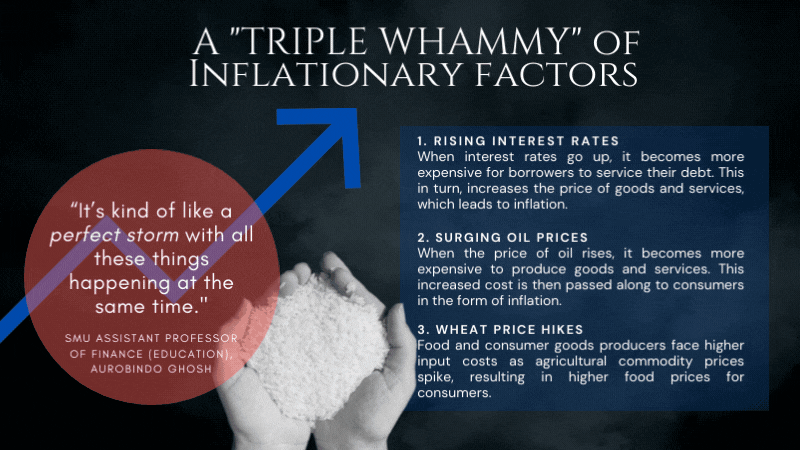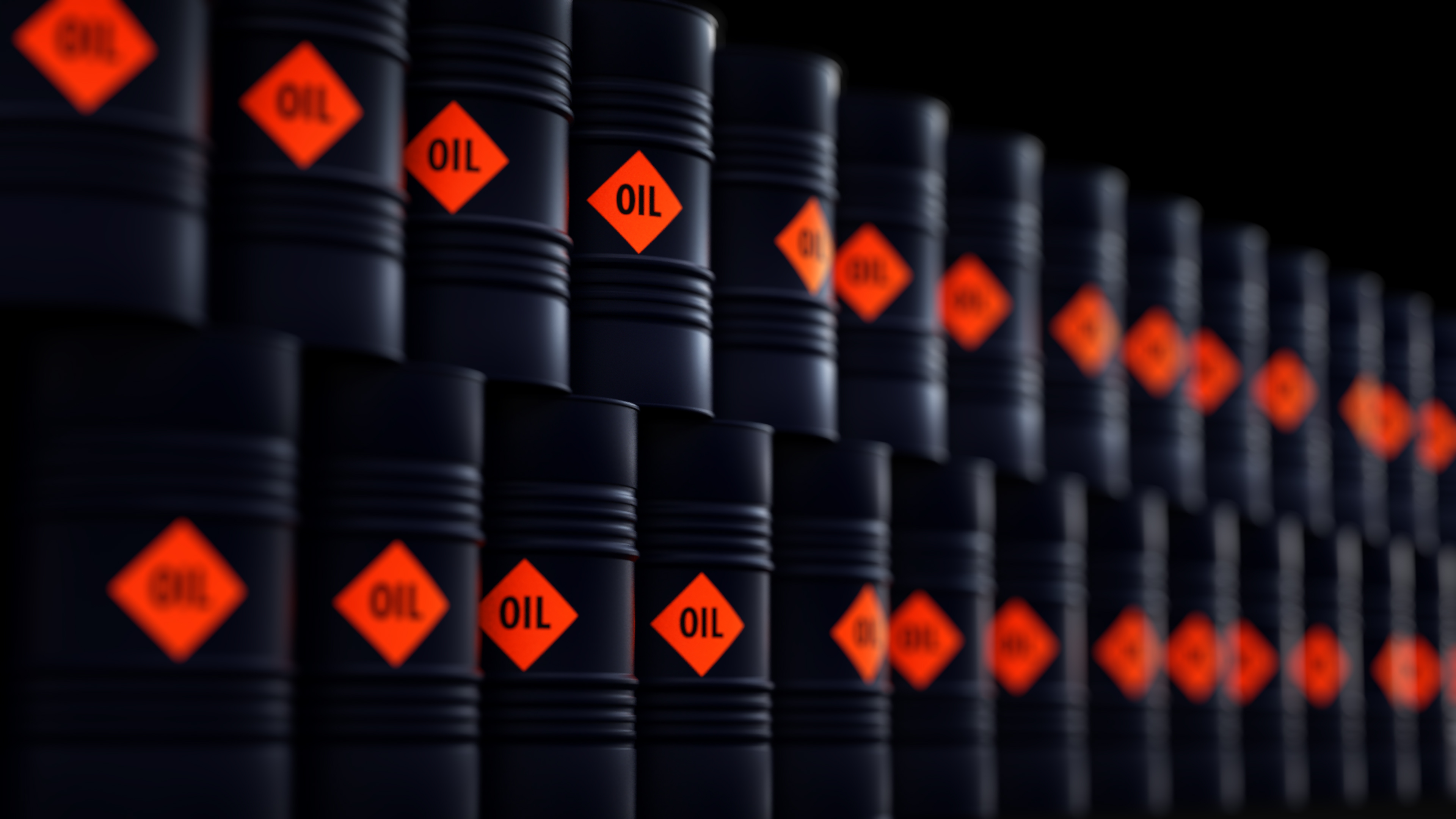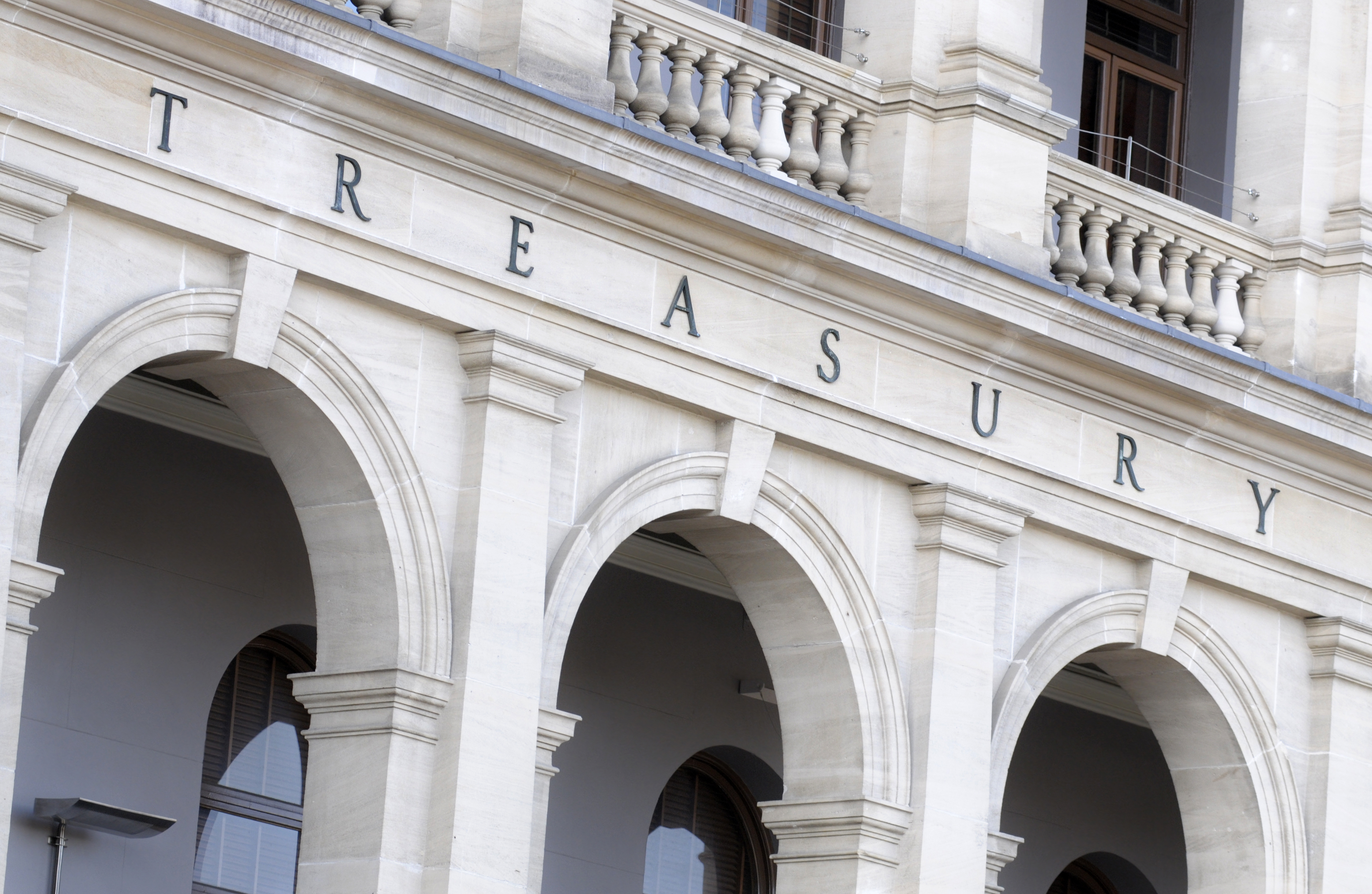Inflation demystified: Here’s what we know about the global price surge -1
Inflation demystified: Here’s what we know about the global price surge -1
By SMU City Perspectives team
Published
It started with a 20 per cent jump in price for a simple bowl of noodles. Next came double-digit hikes in pump prices.
Inflation, a sustained increase in the price level of goods and services in an economy over a period of time, has hit countries around the world hard and fast, even as we inch towards a new endemic era.
Singapore has not been spared, with its annual inflation rate at a nine-year high, hitting 4.3 per cent in February 2022 — up from 4 per cent in the previous two months. Meanwhile in the UK, inflation is at its highest in 30 years; while US inflation rates reached a four decade-high in the same period.
In short, inflation occurs when prices go up, and it typically signals bad news for consumers since it means we have to spend more on the same things. Measured by calculating the percentage change in the Consumer Price Index (CPI) from one year to the next, economists track inflation using the increase in the average price of a basket of select goods.
To better understand why the world is tackling a sudden surge in consumer prices, we turn to SMU Assistant Professor of Finance (Education), Aurobindo Ghosh, at the Lee Kong Chian School of Business at Singapore Management University (SMU). He’s also the Principal Investigator of the DBS-SKBI Inflation Expectations Project. DBS Group Research co-sponsors and is a research partner with SMU’s Sim Kee Boon Institute for Financial Economics.
A perfect storm
While it’s all too easy to blame Covid-19 for global inflation, Prof Ghosh explains that a “perfect storm” of factors has contributed to the current inflationary era.

Such factors could range from climate disasters that have destroyed crops and energy lines, to supply chain disruptions. The latter, for example, caused by insufficient labour or pandemic-related port closures and lockdowns, results in costly delays for retailers. This, in turn, results in price hikes for shoppers on items ranging from a designer handbag to a residential apartment.
And although the confluence of market forces and global events has been building up over recent years, Prof Ghosh nevertheless admitted to being surprised by the significant change in the rate of inflation in Singapore.
“Inflation was already on the rise before the [Russia-Ukraine] conflict started. So prices have been at their highest in the US over the past 40 years, with the war adding yet another dimension to the problem.
In particular, the impact on Singapore as a small economy is staggering as it is an oil importer,” he said.
Oil – a commodity that includes crude and refined petroleum products - has a huge systemic impact on the complex globalised supply chain. Oil prices were on the rise before the Ukraine crisis, but since then, its uptick has been “on steroids”, Prof Ghosh continued.

The conflict in Ukraine has resulted in a decline in Russian oil production, as investors have pulled their money out of Russia amid fears of economic sanctions. This has led to an increase in global oil prices, as the supply of oil is reduced.
Additionally, the conflict has led to instability in Ukraine, which is an important transit country for oil and gas pipelines. This has increased the cost of transporting oil and gas, and exacerbated the rise in global oil prices.
Oil price hikes lead to inflation because they increase the cost of transportation and production. When the cost of oil goes up, businesses also have to spend more to ship their goods and run their factories.
The same war has also affected the world’s supply of food and fertiliser, as Russia and Ukraine account for almost 30 per cent of global exports of wheat and barley. As such, wheat prices have skyrocketed since the start of the conflict — a trend that has caused food prices to soar.
Furthermore, the US Federal Reserve’s move to lift interest rates to tame inflation means that the cost of borrowing will rise, as banks will likely charge higher fees for loans and credit products. This would lead to higher prices for assets like cars and houses, and impact the cost of living for people who have mortgages or other loans.
“I call it a triple whammy. Interest rates in the US has increased and will continue to climb, oil prices have gone up by 60 per cent to almost $126 a barrel and wheat prices also go up because Ukraine and Russia constitute almost 25 per cent of wheat production used globally,” he said.
When inflation overshoots
Inflation can exert varying effects on economic recovery, particularly in the wake of a pandemic. For one, inflation can erode the purchasing power of individuals and businesses, making it harder for them to access essential goods and services.
Additionally, inflation can lead to increased costs for businesses which can then be passed on to consumers in the form of higher prices. This puts an even greater strain on household budgets and could hamper any efforts at recovery.

That’s why authorities have a vital role to play. The US Federal Reserve is expected to deliver interest rate hikes to combat inflation, while the Monetary Authority of Singapore (MAS) has been tightening monetary policy to strengthen the dollar and hedge against inflationary forces. As Prof Ghosh noted, the MAS needs to “address inflation head-on so that other channels of growth are kept open”.
Despite such measures by authorities, consumers will continue to experience a further spike in prices, Prof Ghosh warned. While large corporations such as fast food behemoth McDonald’s could potentially store more wheat in anticipation of further price hikes, that’s not the case for SMEs.
“Small and medium businesses, including our hawkers, cannot afford to store things for a long time, so they have to bear the brunt of the cost increase. As such, there will be some amount of price increase to defray the cost of higher energy expenses and raw materials, maybe by about 5 to 6 per cent in the short run,” he said.
Prof Ghosh added that the key was to not panic about supply crunches, but to think ahead.
“Singapore has a well-diversified supply chain. It is also worthwhile for smaller companies to invest in alternative sources of supply in case the disruption is longer term.”
Protecting one’s bottomline
Prof Ghosh also revealed that those within the lowest 20 per cent income group would be experiencing higher inflation for essential items. The segment faces 1.8 per cent food inflation compared with 1.7 per cent for those in the middle 60 per cent group, and 1.6 per cent for those earning the highest 20 per cent of income.
“The lowest quintile group might suffer the most from rising prices as a greater proportion of their budget is spent on essential items. They also have less savings and investment to mitigate inflation,” he said.
Inflation might also lead to higher rates of unemployment, as businesses cut costs by laying off workers. This disproportionately impacts low income earners, as they are often the first to be laid off — as seen during the pandemic. Lastly, inflation can also cause interest rates to increase, making it difficult for low income earners to take out loans or lines of credit. For those on a low income, their key tool to deal with inflation is to reduce their discretionary spending, Prof Ghosh added.
The cost of living has been on the rise in recent months, as a result of a combination of global events. While the future cannot be predicted, there are steps consumers can take to help manage their expenses in periods of volatility.
Besides cutting out unnecessary expenditure, another key measure is understanding the driving forces behind inflation and how they might impact our everyday life. By being proactive, we can soften the blow of rising prices and maintain a sense of financial security during these uncertain times.


